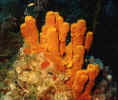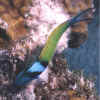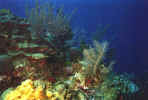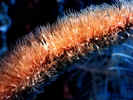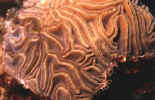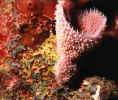
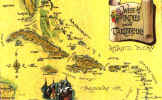 The
Cayman Islands are a group of three small islands located in the Caribbean Sea
approximately 150 miles south of Cuba and 180 miles west of Jamaica. They
are part of the British West Indies, and they boast an extraordinarily high
standard of living for it's native residents. The average household income
of a Cayman Islander is $68,292 U.S. Dollars. Tourism plays a huge role in
the economy, making up almost 70% of government revenues. However, the
Cayman's also boast a highly successful financial market as well. There
are over 600 licensed banks - this places them in the same company as the Swiss
and the Japanese in banking terms.
The
Cayman Islands are a group of three small islands located in the Caribbean Sea
approximately 150 miles south of Cuba and 180 miles west of Jamaica. They
are part of the British West Indies, and they boast an extraordinarily high
standard of living for it's native residents. The average household income
of a Cayman Islander is $68,292 U.S. Dollars. Tourism plays a huge role in
the economy, making up almost 70% of government revenues. However, the
Cayman's also boast a highly successful financial market as well. There
are over 600 licensed banks - this places them in the same company as the Swiss
and the Japanese in banking terms.
 We
were able to visit the islands in February 1999. We spent our time on
Grand Cayman Island, the largest island in the chain at 22 miles long by seven
miles wide. The other two islands, Cayman Brac and Little Cayman lie a
little farther east and can be reached by sea plane from Grand Cayman. We
stayed at the Marriott Beach Resort located on seven mile beach.
We
were able to visit the islands in February 1999. We spent our time on
Grand Cayman Island, the largest island in the chain at 22 miles long by seven
miles wide. The other two islands, Cayman Brac and Little Cayman lie a
little farther east and can be reached by sea plane from Grand Cayman. We
stayed at the Marriott Beach Resort located on seven mile beach.
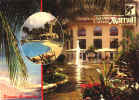 How
would I describe Cayman? Simple. Expensive. Very
Expensive. However, it is a very safe island and the locals are very friendly
and courteous. The facilities are modern and the quality of life is very
good. There is no abstract poverty amidst the grandeur of tourist
resorts. In addition, the scuba diving is excellent. Here are
some photos from the trip...
How
would I describe Cayman? Simple. Expensive. Very
Expensive. However, it is a very safe island and the locals are very friendly
and courteous. The facilities are modern and the quality of life is very
good. There is no abstract poverty amidst the grandeur of tourist
resorts. In addition, the scuba diving is excellent. Here are
some photos from the trip...

There's not much to see top side on Grand Cayman. We
covered it in one day with our sturdy Jeep rental. One thing, you have to
drive on the left side of the road; it's a British thing. As info,
the flowers pictured below were in the hotel lobby and locally grown.
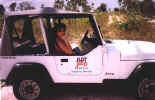
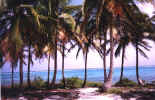
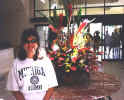

 No
scuba diver can visit the Cayman's without a trip to Sting Ray City. This
shallow area of the North Bay is home to a large group of tame sting rays.
They have become acclimated to divers and are on the look out for a free
handout. They swim right up to you! It's a little weird and
intimidating at first, but once you get used to it, it's a blast.
No
scuba diver can visit the Cayman's without a trip to Sting Ray City. This
shallow area of the North Bay is home to a large group of tame sting rays.
They have become acclimated to divers and are on the look out for a free
handout. They swim right up to you! It's a little weird and
intimidating at first, but once you get used to it, it's a blast.
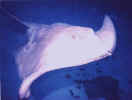 They're
like puppy dogs looking for a treat. Angela and I have never seen anything
like it before. Their skin feels like a firm mushroom and it's very
delicate. The females grow to around three feet in diameter while the males are
a little smaller at one to two feet. This experience was a lot of fun, but
we worked for it. While at the site the current was quite swift.
Most people hung onto the anchor line and flapped in the breeze. Anj and I
were a bit more daring and were able to interact with the rays on the bottom
while the current blew over our heads.
They're
like puppy dogs looking for a treat. Angela and I have never seen anything
like it before. Their skin feels like a firm mushroom and it's very
delicate. The females grow to around three feet in diameter while the males are
a little smaller at one to two feet. This experience was a lot of fun, but
we worked for it. While at the site the current was quite swift.
Most people hung onto the anchor line and flapped in the breeze. Anj and I
were a bit more daring and were able to interact with the rays on the bottom
while the current blew over our heads.

The scuba diving off Grand Cayman is magnificent; the reefs
are healthy and robust. The majority of these photos are from west
shore and north shore wall dives. I captured the large barrel sponge on a
130 foot dive on the north wall. This was an accidental picture. I
was really shooting at a school of Eagle Rays off in the distance, however, they
were gone before I could set up the camera. It was at this point that I
realized the barrel sponge would make a nice photo...
